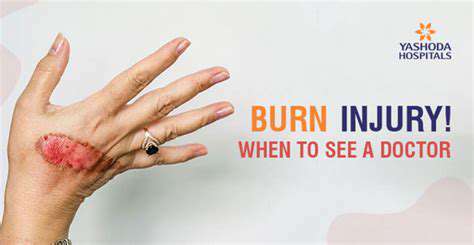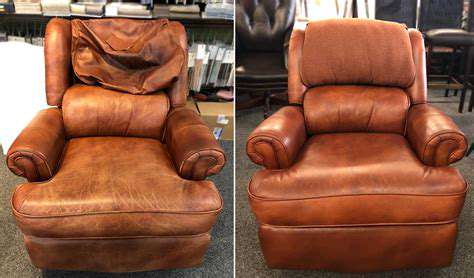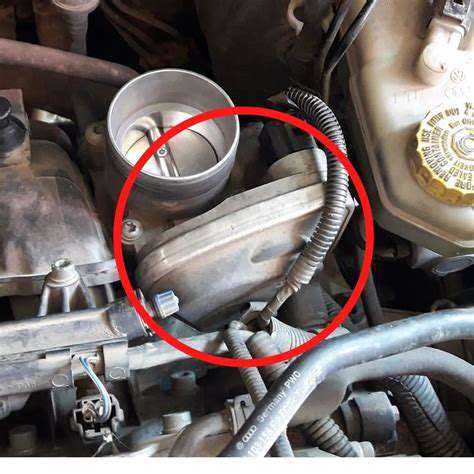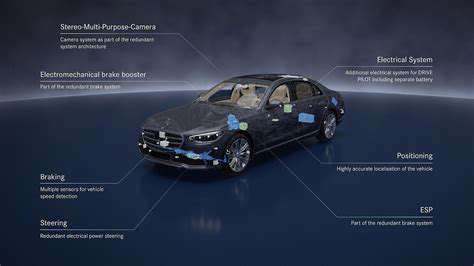Tears
Accidents happen, and tears in your car's upholstery are no exception. Whether it's a rogue key or an unexpected impact, these imperfections can range from minor nicks to gaping holes. The first step is always to assess the damage thoroughly. Run your fingers along the edges - is it a clean cut or a jagged rip? Measure its length and note its position. These details matter because a small tear near a seam might be simpler to fix than a large one in the middle of a seat panel.
Don't underestimate the power of documentation. Snap clear photos from multiple angles, capturing how light interacts with the damaged area. This visual record serves two purposes: it helps professionals understand the scope of work needed, and it's invaluable if you're filing an insurance claim. When examining the tear, ask yourself - can you see the padding underneath? Does the material bunch when you press on it? These observations will guide your next steps.
Burns
That moment when a cigarette ember falls or a hot coffee cup leaves its mark - burns on upholstery tell stories of everyday mishaps. The spectrum ranges from slight discoloration where the heat barely kissed the surface, to charred patches where fibers have melted together. The key indicator is the burn's depth. Light surface burns might only need color restoration, while deeper damage requires more invasive treatment.
Here's a professional tip: use a credit card to test the burn's severity. Gently scrape the edge across the damaged area. If the card catches on raised, brittle fibers, you're likely dealing with significant damage. For deep burns, especially on leather, the repair often involves removing the damaged section entirely. This isn't just about aesthetics - compromised upholstery can affect your vehicle's resale value and even pose safety hazards if sharp edges are exposed.
Stains
From coffee spills to muddy paw prints, stains are the most common upholstery offenders. Time is your greatest enemy here - the longer a stain sits, the deeper it penetrates. But before you reach for any cleaner, perform this crucial test: dab a hidden area with your chosen solution to check for colorfastness. You'd be surprised how many universal cleaners can bleach or discolor certain materials.
For organic stains like food or blood, cold water works better than hot, which can set proteins. Oil-based stains require a different approach - start by blotting (never rubbing!) with cornstarch to absorb excess grease. Always work from the stain's edges toward the center to prevent spreading. And remember, some modern car fabrics have protective coatings that can be damaged by harsh chemicals, so when in doubt, consult your owner's manual.
Identifying the Cause
Every mark tells a story, and understanding its origin is half the battle. That tear along the door-side bolster? Probably from repeatedly sliding in and out. The circular burn on the center console? Likely a vape pen tip. Pattern recognition is your ally - recurring damage in the same spot indicates a systemic issue rather than random accidents.
Take windshield cracks as an analogy - a single impact star is one thing, but spiderwebbing suggests underlying stress. Similarly, if stains keep appearing in your passenger footwell, maybe there's a leaky window seal above. Solving the root cause prevents repeat offenses, whether that means adjusting your entry technique, using coasters, or fixing mechanical issues causing interior moisture.
Repair Options
The repair universe spans from quick fixes to major surgeries. For minor issues, today's DIY kits are surprisingly effective - color-matched vinyl patches or leather fillers can work miracles. But there's an art to blending repairs seamlessly that often requires professional touch. A pro doesn't just fix the damage; they recreate the original grain pattern and match the patina of aged leather.
Consider this: reupholstering a single seat can cost $300-$600, while a professional repair might run $75-$200. The breakeven point? Usually around 30-40% damage coverage. Partial repairs often make more economic sense than full replacements, especially for older vehicles where perfect matching isn't critical. And don't forget - many dealerships offer upholstery protection packages that might cover certain repairs.
Prevention Strategies
An ounce of prevention is worth a pound of cure, especially for car interiors. Strategic protection beats constant cleaning. Custom-fit seat covers aren't your grandma's plastic anymore - modern versions are breathable, form-fitting, and barely noticeable. For high-wear areas like driver's seat bolsters, clear vinyl protectors can add years to your upholstery's life.
Keep a emergency kit in your glovebox: microfiber cloths, a small bottle of interior cleaner, and a roll of blue shop towels. The 30-second rule applies - address spills immediately before they have time to set. For families with kids or pets, consider Scotchgard treatments during deep cleanings. And surprisingly, regular conditioning (even for vinyl) prevents cracking that leads to more serious damage down the road.
Dealing with Burns: Minimizing Damage and Restoration Options

Assessing the Severity of the Burn
Burn evaluation is both science and art. Like medical professionals grading skin burns, upholstery experts categorize damage by layers affected. Surface burns only disrupt the top coating - think of them like sunburn for your seats. These often respond well to color restoration systems. Deeper burns that reach the foam backing are the equivalent of third-degree burns - here, structural integrity becomes a concern.
A little-known fact: leather burns differently than fabric. Genuine leather might char but retain some flexibility, while vinyl can melt into hard, sharp edges. The sniff test works surprisingly well - burnt synthetic materials often release distinct chemical odors that linger. For large burn areas (anything bigger than a credit card), professional assessment is wise, as underlying padding or wiring might be compromised.
Immediate Actions for Burns
Time is tissue, as ER doctors say. For fresh burns, cool the area immediately with a damp (not wet) cloth to stop residual heat from causing more damage. Avoid ice - the extreme temperature difference can cause additional stress to materials. Gently lift any melted fibers with a plastic spatula before they harden into sharp points.
Here's a pro tip: place a coffee filter over fresh burns - it's non-stick and allows the area to breathe while protecting it from further contamination. Never pick at blistered vinyl or try to scrub away char marks aggressively. And surprisingly, aloe vera gel (the pure kind) can help condition damaged leather while you arrange professional repair.
Preventing Further Damage
After initial treatment, protection becomes paramount. Cover burn areas with breathable materials like cotton sheets rather than plastic, which traps moisture. For seats, consider temporarily repositioning the seat or using a cushion to avoid pressure on damaged areas. In sunny climates, use sunshades religiously - UV exposure accelerates deterioration of already compromised materials.
Watch for these warning signs: increasing brittleness around burn edges, strange odors (especially electrical smells), or any exposed metal/springs. These indicate the damage is progressing beyond cosmetic issues. For smokers, this might be nature's way of suggesting it's time to quit - or at least to use the car's ashtray instead of makeshift solutions.
Seeking Professional Help
There comes a point when DIY isn't enough. Seek professional help for any burn that exposes padding or affects more than 10% of a visible surface. Modern repair techniques are remarkable - heat welding for vinyl, leather re-dyeing systems that match factory colors exactly, even fabric reweaving for premium vehicles.
Ask potential repairers about their experience with your specific make - German car leather differs significantly from American or Japanese varieties. The best technicians can often blend repairs so seamlessly that even you'll forget where the damage was. And remember, some burns might be covered under extended warranties or insurance policies, especially if caused by manufacturing defects.












